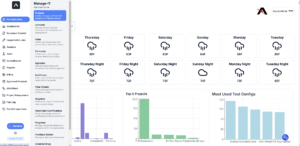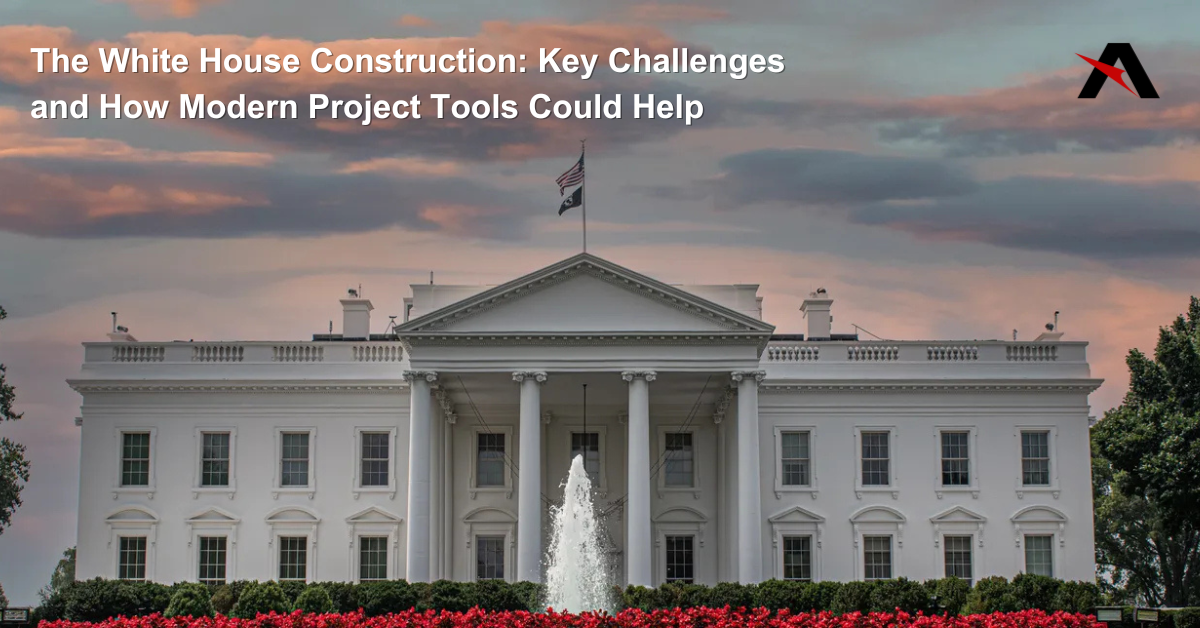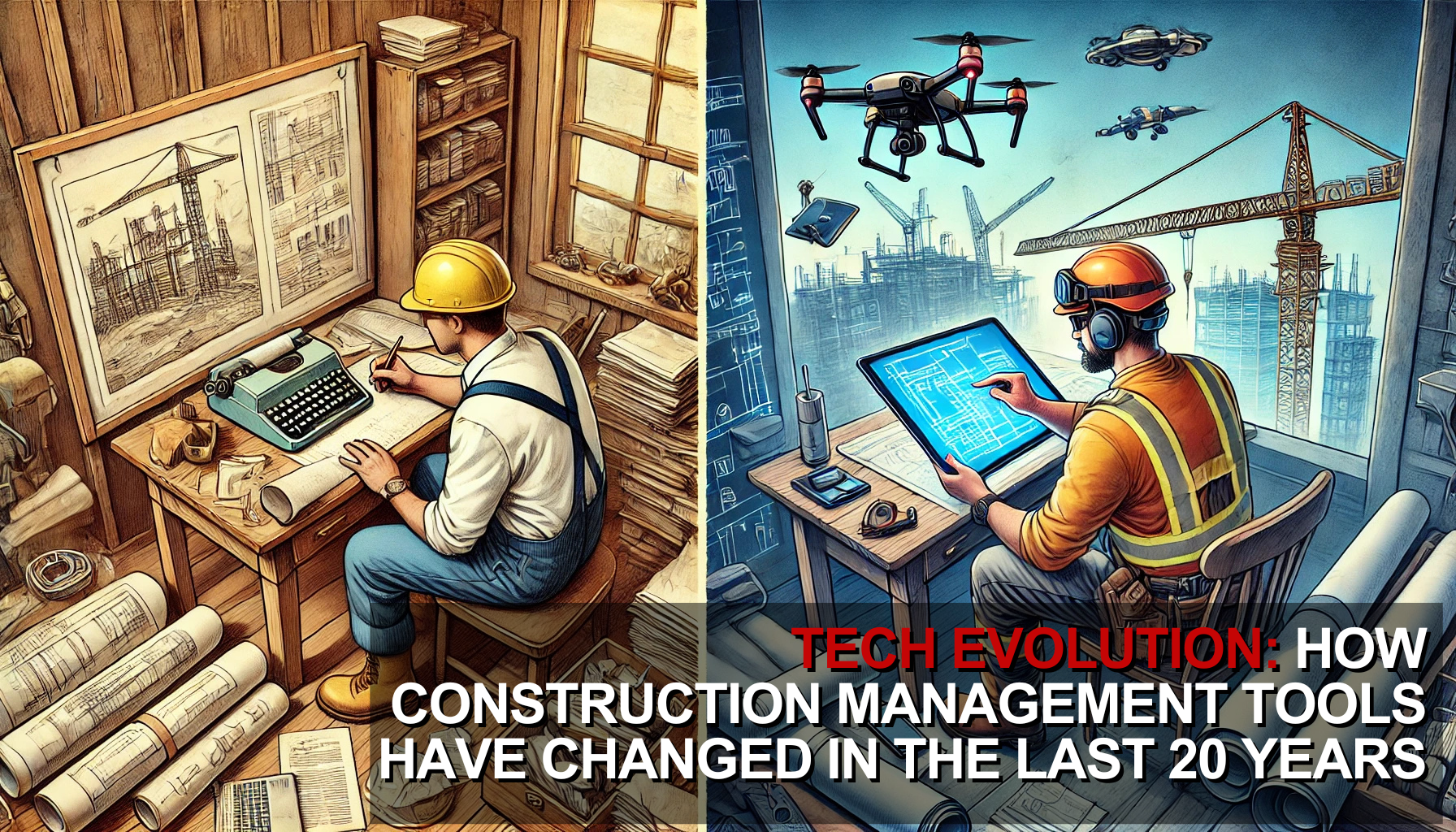In this blog, we dive into the fascinating history of the White House construction, exploring both the challenges and triumphs that defined this iconic project. From communication barriers and budget constraints to weather complications, the builders faced obstacles that, by today’s standards, could be minimized with advanced project management tools. We’ll discuss how a Project Management Information System (PMIS), such as ATSER’s Manage-IT™, could have transformed this historic construction endeavor, offering insights into how modern technology could have streamlined processes and improved efficiency.
The History of the White House
The White House, one of the most iconic landmarks in American history, began construction in 1792. Designed by architect James Hoban and inspired by Leinster House in Dublin, Ireland, the White House has housed 46 presidents over its 220-year history. Although George Washington commissioned its construction, his presidency ended before it was completed, making John Adams the first to reside there.


During the War of 1812, British troops set fire to the building, causing extensive damage and requiring a significant rebuild. Hoban returned to oversee this reconstruction, which began in 1815 and took three years to complete. Over the years, the White House has seen numerous additions and renovations. In the early 20th century, President Theodore Roosevelt added the West and East Wings, and in 1909, President Taft introduced the Oval Office.

Today, the White House, often referred to as “The People’s House,” stands as a vital historical landmark. It serves as the center of executive power and a symbol of democratic governance for American citizens and the world. More than just a residence, the White House is a living museum of American history, reflecting the country’s milestones, social progress, and leadership across generations.
White House Construction Facts
Beyond its immense history and political significance, the White House offers valuable insights into construction efficiency and management. Here are some interesting facts about its initial construction in 1792:
- The White House was completed in 1800, taking eight years to finish.
- Approximately 400 to 600 laborers were involved in the construction, though detailed records are scarce.
- The original walls were made of Aquia Creek sandstone, but other materials were also used, including lumber, brick, lime mortar, iron, and lead.
- The original White House had about 36 rooms and three floors, covering a total of 55,000 square feet.
- Today, the White House boasts 132 rooms across six floors, with additional features like a bowling alley, a movie theater, and more. Its total area has expanded to around 67,000 square feet.
Constructing such a pivotal symbol of American democracy and politics required immense planning, innovation, and visionary design. While the White House still stands today, having undergone numerous renovations, the team responsible for its creation faced significant challenges. With modern project management tools, many of these obstacles could have been managed or avoided more effectively, ensuring smoother execution and greater efficiency.

Project Management Challenges
The White House was a remarkable architectural feat for its time, but its construction faced numerous obstacles. Here’s a look at the key project management challenges the team encountered:
1. Lack of communication
In the 18th century, cell phones and computers didn’t exist. Communication for a project of this scale relied solely on letters or in-person meetings, leading to frequent delays and miscommunications. Also, coordinating a large, diverse workforce was extremely difficult without faster communication options.
2. Decentralized Management
Although George Washington oversaw the project, day-to-day management was decentralized, complicating any modifications. Design changes made throughout construction doubled the estimated timeline from four to eight years. Furthermore, enslaved laborers often faced sudden task changes or removals. This resulted in people being unaccounted for, greatly affecting the timeline, schedules, and costs.
3. Poor supply chain
Materials chosen for this project had to be transported extremely far, posing significant logistical challenges. For example, all materials had to be transported through horse-drawn carts or boats, slowing down deliveries. With America’s industrial infrastructure not being developed, materials needed to be transported from other places, causing even further delays.
4. Budget Mismanagement
At the start of the project, the team underestimated the initial budget, resulting in a final cost of approximately $232,372. Additionally, significant delays caused by miscommunication and a slow supply chain further drove up expenses. These management challenges placed considerable financial strain on the construction of the White House.
5. Weather challenges
Washington, D.C.’s climate posed severe challenges. With hot summers, wet winters, and swampy land around the construction site, work was often halted. The extreme weather caused costly delays, and the site’s unstable soil presented constant hurdles for the builders. Limited technology meant they couldn’t predict or manage these risks as efficiently as today.
How a PMIS Could Have Improved the Construction Process
If the White House had been built with the help of a Project Management Information System (PMIS), many of the challenges faced in the 18th century could have been alleviated, and construction might have finished sooner. Here’s how a PMIS could have improved the process:
- Efficient Communication
With today’s PMIS and technology, communication across the vast construction team would be far smoother. Project schedules, assignments, and crucial design changes could be updated and shared instantly, ensuring everyone—from laborers to engineers—was always on the same page.
- Centralized Information
With PMIS tools all information can be readily available in real-time for anyone working on the assignment to view. Blueprints, reports, and other critical documents could be stored digitally, with changes tracked and readily available, reducing confusion and ensuring that all team members had the latest information.
- Improved Supply Chain Management
Materials can easily be tracked and managed from one place, letting managers know if they are low on any items and if they need to buy more, ensuring that items will arrive on time. This would minimize waste, prevent shortages, and ultimately save money.
- Effective Budget Management
The initial White House budget was underestimated, leading to cost overruns. With PMIS tools, site managers could monitor spending in real time, allowing them to make informed financial decisions, track costs accurately, and maintain better control over the project’s budget.

- Geographical and Weather Monitoring
Additionally, with a PMIS tool managers can prepare for unpredictable weather and challenging terrain. With weather monitoring, managers could plan for extreme conditions, while detailed records about the construction site would help teams tackle the swampy land effectively.
By using a PMIS, the White House construction team could have improved communication, minimized costly delays, and completed the building more efficiently making better use of both labor and materials.
How Could ATSER’s PMIS Help
Although the White House was built long before innovative modern technology, a Project Management Information System like ATSER’s Manage-IT™ could have significantly streamlined and transformed the construction process. ATSER’s Manage-IT™ addresses the unique challenges of large-scale projects across various industries, providing the ultimate PMIS solution for enhancing workflows through centralized data management.
How Manage-It™ Features Could Have Made an Impact
- Enhanced Project Management with Administration Suite: Managers gain access to specialized tools designed for precise tracking of project timelines, budgets, regulatory documentation, and more ensuring every detail is tracked with ease.
- Streamlined Reporting & Payments with Construction Suite: ATSER’s Manage-IT™ accelerates project oversight with automated progress reports and budget analytics, allowing you to stay on top of every aspect of your project efficiently.
- Real-Time Data and Streamlined Communications: With systems that enable real-time data sharing and instant communication, all teams can seamlessly collaborate and stay informed on project updates. This enhances communication, project tracking, safety, and overall teamwork.
Here is Why ATSER’S PMIS outperforms the competitors:
Proven Track Record
ATSER understands the unique demands of AEC industries, successfully supporting organizations from the Department of Transportation to major municipal projects. Committed to excellence, ATSER delivers reliable, up-to-date project management solutions tailored to complex needs.
Customizable and Compatible
ATSER’s systems are fully customizable, designed to seamlessly integrate with your current infrastructure, ensuring that industry-specific requirements are met, and operational efficiency is maximized.
Ongoing Quality Enhancements
ATSER prioritizes client satisfaction by offering dedicated support and regular system updates, providing you with the latest tools and features to keep your projects ahead of the curve.





